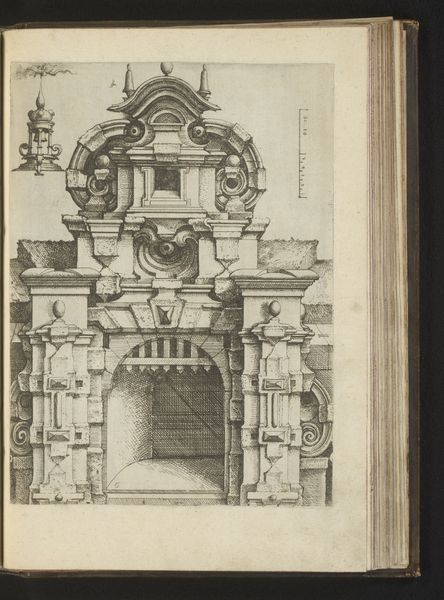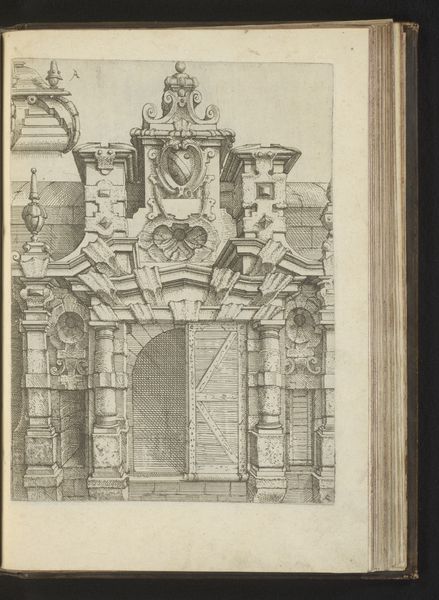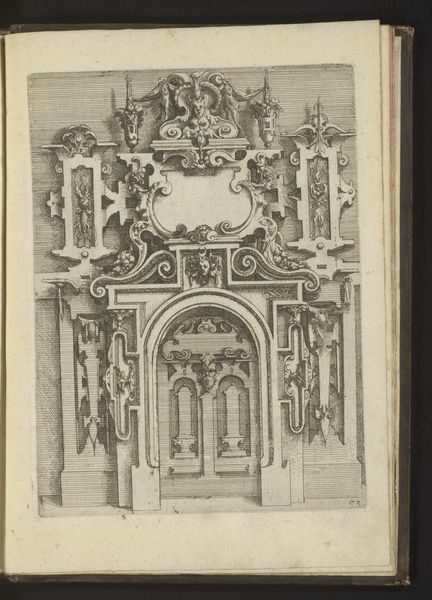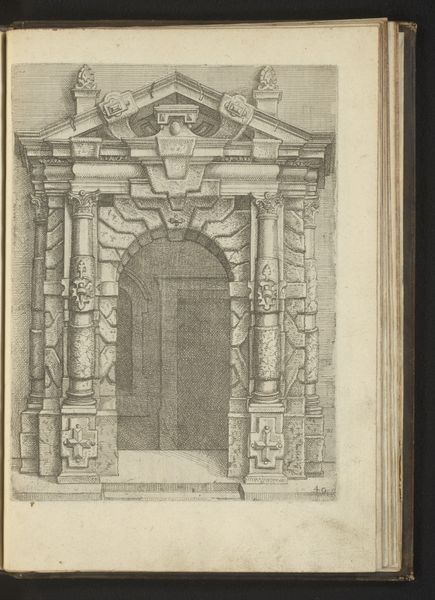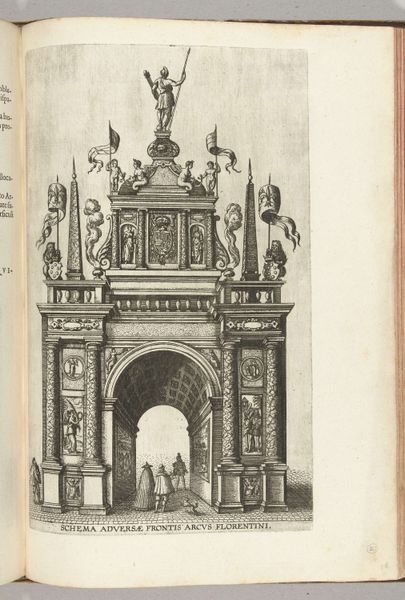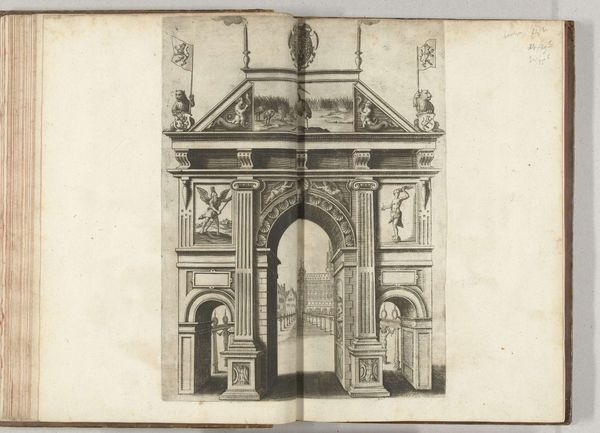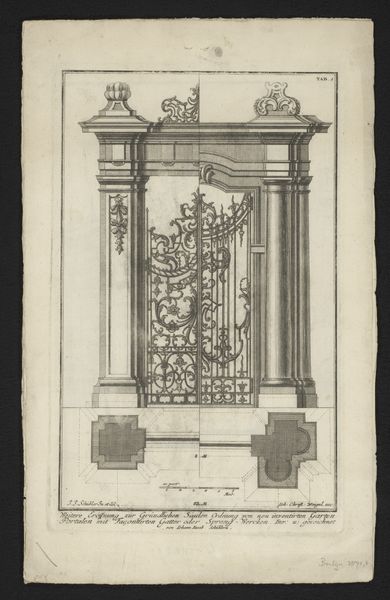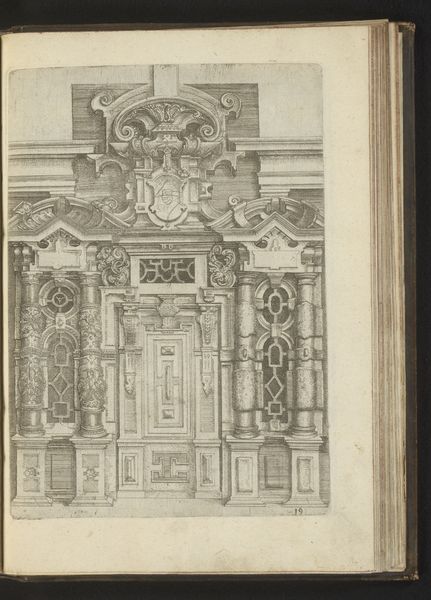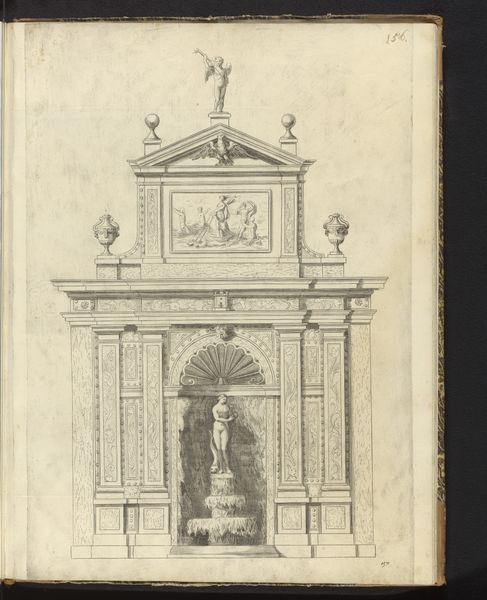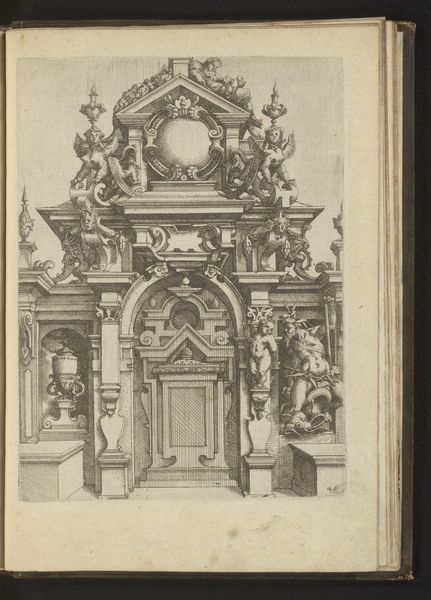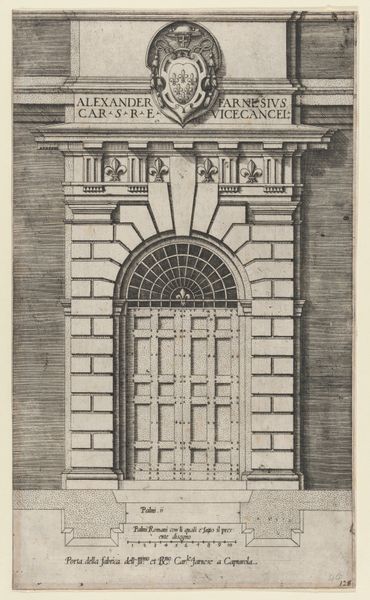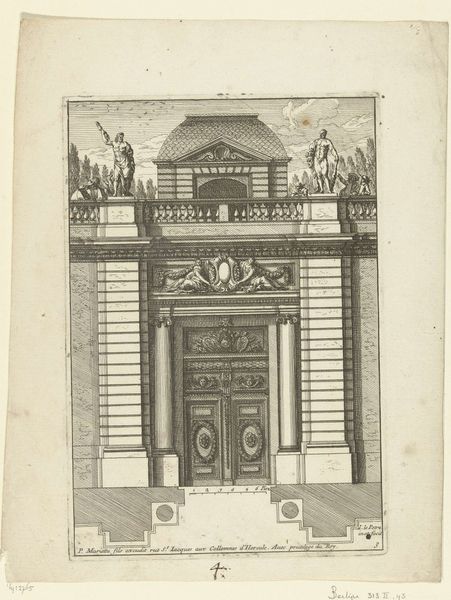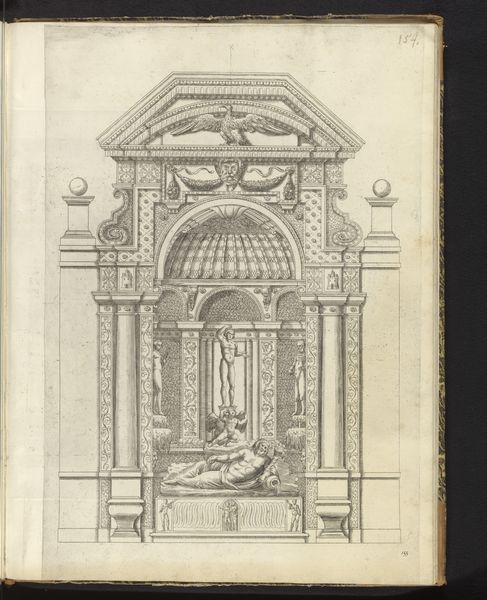
drawing, paper, engraving, architecture
#
drawing
#
paper
#
form
#
geometric
#
line
#
cityscape
#
italian-renaissance
#
engraving
#
architecture
#
realism
Dimensions: height 474 mm, width 332 mm
Copyright: Rijks Museum: Open Domain
Editor: Here we have "Poort naar de tuin van Vincenzo Giustiniani," an engraving made between 1636 and 1647 by Vincenzo Leonardi. It depicts a doorway, rendered with incredible detail. What I find immediately striking is the rigid symmetry and geometric precision. How do you interpret this work? Curator: For me, it's about how architecture speaks. This doorway isn't just an entrance; it's a carefully constructed symbol, echoing classical ideals of order and harmony. The symmetry you mentioned reinforces this, but look closer at the details—the garlands, the crest. What do they suggest to you? Editor: Hmm, status? Family pride, perhaps? It feels like more than just a functional entry point. Curator: Exactly. The imagery elevates it. Think about what a garden represented in the Renaissance – a cultivated paradise, a space of contemplation. This doorway becomes a symbolic threshold, an invitation not just to a physical space, but also to an elevated state of mind. Does the archway, like a halo, say something? Editor: So, it's less about the specific Giustiniani garden and more about the ideal that it represents through these classical symbols? Curator: Precisely. And Leonardi, through this precise engraving, is capturing that ideal, solidifying its cultural weight. How fascinating that such an opening – or any boundary – could stand for so much more! Editor: That’s fascinating, I never considered how much an entryway could express about cultural values. Curator: Indeed! It's a powerful reminder of how images carry echoes of history, shaping our perceptions of the present. A boundary is much more than the end of something. Editor: I'll definitely look at doorways differently now.
Comments
No comments
Be the first to comment and join the conversation on the ultimate creative platform.
